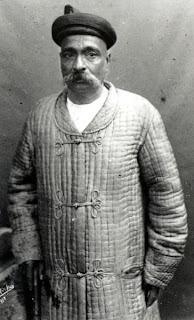Born: October 2, 1869
Died: January 30, 1948.
Achievements: Known as Father of Nation; played a key role in winning freedom for India; introduced the concept of Ahimsa and Satyagraha.
Mahatma Gandhi popularly known as Father of Nation played a stellar role in India's freedom struggle. Born in a Bania family in Kathiawar, Gujarat, his real name was Mohandas Karamchand Gandhi (M.K. Gandhi). The title Mahatma came to be associated with his name much later. Before Gandhiji's arrival on the Indian political scene, freedom struggle was limited only to the intelligentsia. Mahatma Gandhi's main contribution lay in the fact that he bridged the gulf between the intelligentsia and the masses and widened the concept of Swaraj to include almost every aspect of social and moral regeneration. Paying tribute to Mahatma Gandhi on his death, famous scientist Albert Einstein said, "Generations to come will scarce believe that such a man as this walked the earth in flesh and blood".
Mohandas Karamchand Gandhi was born on October 2, 1869, at Porbandar, a small town on the western coast of India, which was then one of the many tiny states in Kathiawar. Gandhiji was born in middle class family of Vaishya caste. His father, Karamchand Gandhi, was a Dewan or Prime Minister of Porbandar. His mother, Putlibai, was a very religious lady and left a deep impression on Gandhiji's mind. Gandhiji was a mediocre student and was excessively shy and timid.
Gandhiji was truthful in his conduct right
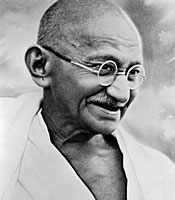
from the childhood. There is a very famous incident in this regard. A British school inspector once came to Gandhiji's school and set a spelling test. Gandhiji spelled all the words correctly except kettle. The class teacher noticed the mistake and gestured Gandhiji to copy the correct spelling from the boy sitting next to him. Gandhiji refused to take the hint and was later scolded for his "stupidity".
Gandhiji was married at the age of thirteen to Kasturbai. He was in high school at that time. Later on in his life, Gandhiji denounced the custom of child marriage and termed it as cruel. After matriculating from the high school, Gandhiji joined the Samaldas College in Bhavnagar. After the death of Gandhiji's father in 1885, a family suggested that if Gandhiji hoped to take his father's place in the state service he had better become a barrister which he could do in England in three years. Gandhi welcomed the idea but his mother was objected to the idea of going abroad. To win his mother's approval Gandhiji took a solemn vow not to touch wine, women and meat and remained true to it throughout his stay in England.
Gandhiji sailed for England on September 4, 1888. Initially he had difficulty in adjusting to English customs and weather but soon he overcame it. Gandhiji completed his Law degree in 1891 and returned to India. He decided to set up legal practice in Bombay but couldn't establish himself. Gandhiji returned to Rajkot but here also he could not make much headway. At this time Gandhiji received an offer from Dada Abdulla & Co. to proceed to South Africa on their behalf to instruct their counsel in a lawsuit. Gandhiji jumped at the idea and sailed for South Africa in April 1893.
It was in South Africa that Gandhiji's transformation from Mohandas to Mahatma took place. Gandhiji landed at Durban and soon he realized the oppressive atmosphere of racial snobbishness against Indians who were settled in South Africa in large numbers. After about a week's stay in Durban Gandhiji left for Pretoria, the capital of the Transvaal, in connection with a lawsuit. When the train reached Pietermaritzburg, the capital of Natal, at about 9 p.m. a white passenger who boarded the train objected to the presence of a "coloured" man in the compartment and Gandhji was ordered by a railway official to shift to a third class. When he refused to do so, a constable pushed him out and his luggage was taken away by the railway authorities. It was winter and bitterly cold. This incident changed Gandhiji's life forever. He decided to fight for the rights of Indians. Gandhiji organised the Indian community in South Africa and asked them to forget all distinctions of religion and caste. He suggested the formation of an association to look after the Indian settlers and offered his free time and services.
During his stay in South Africa, Gandhiji's life underwent a change and he developed most of his political ideas. Gandhiji decided to
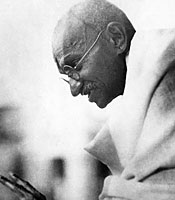
dedicate himself completely to the service of humanity. He realized that absolute continence or brahmacharya was indispensable for the purpose as one could not live both after the flesh and the spirit. In 1906, Gandhiji took a vow of absolute continence. In the course of his struggle in South Africa, Gandhiji, developed the concepts of Ahimsa (non-violence) and Satyagraha (holding fast to truth or firmness in a righteous cause). Gandhiji's struggle bore fruit and in 1914 in an agreement between Gandhiji and South African Government, the main Indian demands were conceded.
Gandhiji returned to India in 1915 and on the advice of his political guru Gopal Krishna Gokhale, spent the first year touring throughout the country to know the real India. After an year of wandering, Gandhiji settled down on the bank of the river Sabarmati, on the outskirts of Ahmedabad, where he founded an ashram called Satyagraha Ashram. Gandhiji's first satyagraha in India was in Champaran, in Bihar, where he went in 1917 at the request of a poor peasants to inquire into the grievances of the much exploited peasants of that district, who were compelled by British indigo planters to grow indigo on 15 percent of their land and part with the whole crop for rent. Gandhiji's Satyagraha forced British government to set up a inquiry into the condition of tenant farmers. The report of the committee of which Gandhi was a member went in favour of the tenant farmers. The success of his first experiment in satyagraha in India greatly enhanced Gandhiji's reputation in the country.
In 1921, Gandhji gave the call for Non-cooperation movement against the ills of British rule. Gandhiji's call roused the sleeping nation. Many Indians renounced their titles and honours, lawyers gave up their practice, and students left colleges and schools. Non-cooperation movement also brought women into the domain of freedom struggle for the first time. Non-cooperation movement severely jolted the British government. But the movement ended in an anti-climax in February 1922. An outbreak of mob violence in Chauri Chaura so shocked and pained Gandhi that he refused to continue the campaign and undertook a fast for five days to atone for a crime committed by others in a state of mob hysteria.
Gandhiji was sentenced to six years imprisonment but was released in 1924 on medical grounds. For the next five years Gandhi seemingly retired from active agitational politics and devoted himself to the propagation of what he regarded as the basic national needs, namely, Hindu-Muslim unity, removal of untouchability, equality of women, popularization of hand-spinning and the reconstruction of village economy.
On March 12, 1930 Gandhiji started the historic Dandi March to break the law which had deprived the poor man of his right to make his own salt. On April 6, 1930 Gandhiji broke the Salt law at the sea beach at Dandi. This simple act was immediately followed by a nation-wide defiance of the law. This movement galvanized the whole nation and came to be known as "Civil Disobedience Movement". Within a few weeks about a hundred thousand men and women were in jail, throwing mighty machinery of the British Government out of gear. This forced the then Viceroy Lord Irwin to call Gandhiji for talks. On March 5, 1931 Gandhi Irwin Pact was signed. Soon after signing the pact Gandhiji went to England to attend the First Round Table Conference.
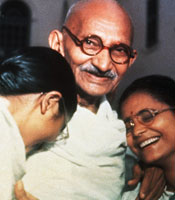
Soon after his return from England Gandhiji was arrested without trial.
After the outbreak of Second World War in 1939, Gandhiji again became active in the political arena. British Government wanted India's help in the war and Congress in return wanted a clear-cut promise of independence from British government. But British government dithered in its response and on August 8, 1942 Gandhiji gave the call for Quit India Movement. Soon the British Government arrested Gandhiji and other top leaders of Congress. Disorders broke out immediately all over India and many violent demonstrations took place. While Gandhiji was in jail his wife Kasturbai passed away. Gandhiji too had a severe attack of Malaria. In view of his deteriorating health he was released from the jail in May 1944.
Second World War ended in 1945 and Britain emerged victorious. In the general elections held in Britain in 1945, Labour Party came to power, and Atlee became the Prime Minister. He promised an early realization of self Government in India. A Cabinet Mission arrived from England to discuss with Indian leaders the future shape of a free and united India, but failed to bring the Congress and Muslims together. India attained independence but Jinnah's intransigence resulted in the partition of the country. Communal riots between Hindus and Muslims broke out in the country in the aftermath of partition. Tales of atrocities on Hindus in Pakistan provoked Hindus in India and they targeted Muslims. Gandhiji worked ceaselessly to promote unity between Hindus and Muslims. This angered some Hindu fundamentalists and on January 30, 1948 Gandhiji was shot dead by one such fundamentalist Nathu Ram Godse while he was going for his evening prayers. The last words on the lips of Gandhiji were Hey Ram.
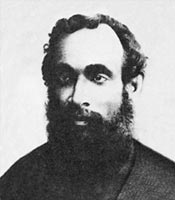 After graduating from the University of Calcutta, Surendranath traveled to England in 1868 along with Romesh Chunder Dutt and Behari Lal Gupta to appear for the Indian Civil Service exams. Though he passed the ICS in 1869, he was dismissed because of a dispute over his right age. After this matter was sorted out in a court of law, Banerjee reappeared for the exam and once again managed to clear it in 1871. He was appointed as the assistant magistrate in Sylhet, but was chucked out due to racial discrimination.
After graduating from the University of Calcutta, Surendranath traveled to England in 1868 along with Romesh Chunder Dutt and Behari Lal Gupta to appear for the Indian Civil Service exams. Though he passed the ICS in 1869, he was dismissed because of a dispute over his right age. After this matter was sorted out in a court of law, Banerjee reappeared for the exam and once again managed to clear it in 1871. He was appointed as the assistant magistrate in Sylhet, but was chucked out due to racial discrimination.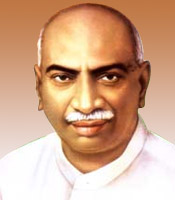 Kamaraj was called kingmaker because he played a crucial role in the appointment of India's two Prime Ministers - Lal Bahadur Shastri in the year 1964 and again Indira Gandhi in the year 1966. Thus, people fondly called him the Gandhi of South India or even the Black Gandhi. In his hometown Tamil Nadu, the denizens still credit him for spreading education facility to the thousands under the poverty line.
Kamaraj was called kingmaker because he played a crucial role in the appointment of India's two Prime Ministers - Lal Bahadur Shastri in the year 1964 and again Indira Gandhi in the year 1966. Thus, people fondly called him the Gandhi of South India or even the Black Gandhi. In his hometown Tamil Nadu, the denizens still credit him for spreading education facility to the thousands under the poverty line.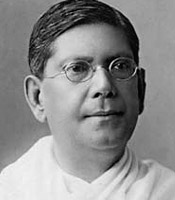 Read this biography to know more about the life history of Chittaranjan Das or CR Das, who was an important personality in Bengal during the time of the non-cooperation movement from 1919 to 1922. It was he who started the boycott of British or western dresses. He set an example for others to follow by burning his own western clothes and in its stead, adopting the hand made desi khadi garments. He later set up the Swaraj Party to propagate his non-moderate views with Motilal Nehru.
Read this biography to know more about the life history of Chittaranjan Das or CR Das, who was an important personality in Bengal during the time of the non-cooperation movement from 1919 to 1922. It was he who started the boycott of British or western dresses. He set an example for others to follow by burning his own western clothes and in its stead, adopting the hand made desi khadi garments. He later set up the Swaraj Party to propagate his non-moderate views with Motilal Nehru.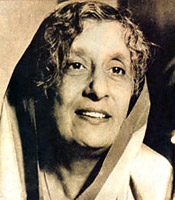 She came from a royal family background. She was the only daughter of her parents, Raja Harnam Singh and Rani Harnam Singh. She had seven brothers. She did her schooling from England at the school at Sherborne, Dorsetshire. She graduated from Oxford University. She was a fabulous tennis player. She even won a number of prizes for her excellent performance.
She came from a royal family background. She was the only daughter of her parents, Raja Harnam Singh and Rani Harnam Singh. She had seven brothers. She did her schooling from England at the school at Sherborne, Dorsetshire. She graduated from Oxford University. She was a fabulous tennis player. She even won a number of prizes for her excellent performance.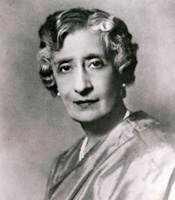 for the establishment of the All India Institute of Medical Sciences in New Delhi. For this, she secured aid from different countries like New Zealand, West Germany etc. She also provided assistance to a rehabilitation centre. She and her brother even donated their ancestral property that was made the holiday home for the staff of the institute.
for the establishment of the All India Institute of Medical Sciences in New Delhi. For this, she secured aid from different countries like New Zealand, West Germany etc. She also provided assistance to a rehabilitation centre. She and her brother even donated their ancestral property that was made the holiday home for the staff of the institute.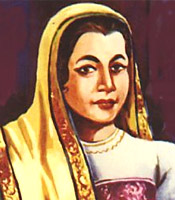 In the year 1896, the Bombay presidency was hit by a natural calamity, which had adverse effects on the city. Bhikaji was instrumental in the activities undertaken to provide assistance to the afflicted people. While rescuing other people and inoculating them, she herself became a victim of the infection. She became very weak, but somehow managed to survive. In the year 1902, she went to Europe for subsequent medical care and convalescence.
In the year 1896, the Bombay presidency was hit by a natural calamity, which had adverse effects on the city. Bhikaji was instrumental in the activities undertaken to provide assistance to the afflicted people. While rescuing other people and inoculating them, she herself became a victim of the infection. She became very weak, but somehow managed to survive. In the year 1902, she went to Europe for subsequent medical care and convalescence.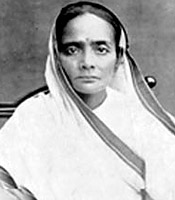 From the period between 1904 and 1914, she was actively involved in the Phoenix Settlement near Durban. In the year 1913, she raised her voice against the inhuman working conditions of Indians in South Africa. Infact, she was imprisoned for three months and that too in the jail, where the prisoners were made to do hard labor. In 1915, she accompanied her husband and supported the Indigo planters. There, she taught women and children about basic concepts like personal hygiene, discipline etc.
From the period between 1904 and 1914, she was actively involved in the Phoenix Settlement near Durban. In the year 1913, she raised her voice against the inhuman working conditions of Indians in South Africa. Infact, she was imprisoned for three months and that too in the jail, where the prisoners were made to do hard labor. In 1915, she accompanied her husband and supported the Indigo planters. There, she taught women and children about basic concepts like personal hygiene, discipline etc.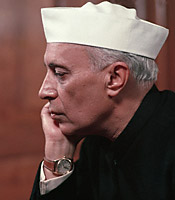 1889. His father Motilal Nehru was a famous Allahabad based barrister. Jawaharlal Nehru's mother's name was Swaroop Rani. Jawaharlal Nehru was the only son of Motilal Nehru. Motilal Nehru has three daughters apart from Jawaharlal Nehru. Nehrus were Saraswat Brahmin of Kashmiri lineage.
1889. His father Motilal Nehru was a famous Allahabad based barrister. Jawaharlal Nehru's mother's name was Swaroop Rani. Jawaharlal Nehru was the only son of Motilal Nehru. Motilal Nehru has three daughters apart from Jawaharlal Nehru. Nehrus were Saraswat Brahmin of Kashmiri lineage.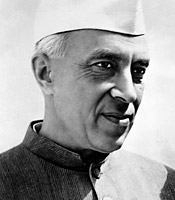 Government of India Act 1935, the Congress Party decided to contest elections. Nehru stayed out of the elections, but campaigned vigorously nationwide for the party. The Congress formed governments in almost every province, and won the largest number of seats in the Central Assembly. Nehru was elected to the Congress presidency in 1936, 1937, and 1946, and came to occupy a position in the nationalist movement second only to that of Gandhi. Jawaharlal Nehru was arrested in 1942 during Quit India Movement. Released in 1945, he took a leading part in the negotiations that culminated in the emergence of the dominions of India and Pakistan in August 1947.
Government of India Act 1935, the Congress Party decided to contest elections. Nehru stayed out of the elections, but campaigned vigorously nationwide for the party. The Congress formed governments in almost every province, and won the largest number of seats in the Central Assembly. Nehru was elected to the Congress presidency in 1936, 1937, and 1946, and came to occupy a position in the nationalist movement second only to that of Gandhi. Jawaharlal Nehru was arrested in 1942 during Quit India Movement. Released in 1945, he took a leading part in the negotiations that culminated in the emergence of the dominions of India and Pakistan in August 1947.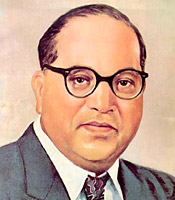 on April 14, 1891 in Mhow (presently in Madhya Pradesh). He was the fourteenth child of Ramji and Bhimabai Sakpal Ambavedkar. B.R. Ambedkar belonged to the "untouchable" Mahar Caste. His father and grandfather served in the British Army. In those days, the government ensured that all the army personnel and their children were educated and ran special schools for this purpose. This ensured good education for Bhimrao Ambedkar, which would have otherwise been denied to him by the virtue of his caste.
on April 14, 1891 in Mhow (presently in Madhya Pradesh). He was the fourteenth child of Ramji and Bhimabai Sakpal Ambavedkar. B.R. Ambedkar belonged to the "untouchable" Mahar Caste. His father and grandfather served in the British Army. In those days, the government ensured that all the army personnel and their children were educated and ran special schools for this purpose. This ensured good education for Bhimrao Ambedkar, which would have otherwise been denied to him by the virtue of his caste.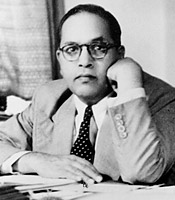 controversial decision to co-operate with the all-British Simon Commission which was to look into setting up a responsible Indian Government in India. The Congress decided to boycott the Commission and drafted its own version of a constitution for free India. The Congress version had no provisions for the depressed classes. Ambedkar became more skeptical of the Congress's commitment to safeguard the rights of the depressed classes.
controversial decision to co-operate with the all-British Simon Commission which was to look into setting up a responsible Indian Government in India. The Congress decided to boycott the Commission and drafted its own version of a constitution for free India. The Congress version had no provisions for the depressed classes. Ambedkar became more skeptical of the Congress's commitment to safeguard the rights of the depressed classes.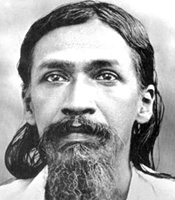 he was sent to Loretto Convent School at Darjeeling. Two years later in 1879, Aurobindo Ghose, was sent to England along with his brothers for higher studies. Aurobindo completed his schooling from St. Paul's in London. In 1890, at the age of eighteen, Sri Aurobindo got admission into Cambridge. Here, he distinguished himself as a student of European classics. To comply with the wish of his father, Sri Aurobindo Ghose also applied for the ICS while at Cambridge. He passed the Indian Civil Service Examination with great credit in 1890. He, however, failed to stand the required test in horsemanship and hence was not allowed to enter the Covenantal Service of the Indian Government.
he was sent to Loretto Convent School at Darjeeling. Two years later in 1879, Aurobindo Ghose, was sent to England along with his brothers for higher studies. Aurobindo completed his schooling from St. Paul's in London. In 1890, at the age of eighteen, Sri Aurobindo got admission into Cambridge. Here, he distinguished himself as a student of European classics. To comply with the wish of his father, Sri Aurobindo Ghose also applied for the ICS while at Cambridge. He passed the Indian Civil Service Examination with great credit in 1890. He, however, failed to stand the required test in horsemanship and hence was not allowed to enter the Covenantal Service of the Indian Government. concentrated yoga at Pondicherry, Sri Aurobindo launched Arya, a 64 page monthly review. For the next six and a half years this became the vehicle for most of his most important writings, which appeared in serialised form. These included Essays on The Gita, The Secret of The Veda, Hymns to the Mystic Fire, The Upanishads, The Foundations of Indian Culture, War and Self-determination, The Human Cycle, The Ideal of Human Unity, and The Future Poetry. In 1926, Sri Aurobindo Ghose retired from public life.
concentrated yoga at Pondicherry, Sri Aurobindo launched Arya, a 64 page monthly review. For the next six and a half years this became the vehicle for most of his most important writings, which appeared in serialised form. These included Essays on The Gita, The Secret of The Veda, Hymns to the Mystic Fire, The Upanishads, The Foundations of Indian Culture, War and Self-determination, The Human Cycle, The Ideal of Human Unity, and The Future Poetry. In 1926, Sri Aurobindo Ghose retired from public life.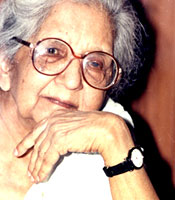 As Asaf Ali was deeply involved with freedom struggle, after marriage Aruna Asaf Ali too plunged into it. Her first major political action was during the Salt Satyagraha in 1930 when she addressed public meetings and led processions. British Government charged her for being a “vagrant” and sentenced her to one year’s imprisonment. When political prisoners were released in the aftermath of Gandhi-Irwin pact, Aruna was not released. But a public agitation in favour of her release forced British government to release her.
As Asaf Ali was deeply involved with freedom struggle, after marriage Aruna Asaf Ali too plunged into it. Her first major political action was during the Salt Satyagraha in 1930 when she addressed public meetings and led processions. British Government charged her for being a “vagrant” and sentenced her to one year’s imprisonment. When political prisoners were released in the aftermath of Gandhi-Irwin pact, Aruna was not released. But a public agitation in favour of her release forced British government to release her.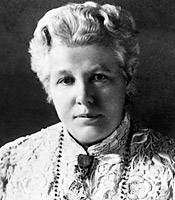 Annie Besant was married in 1867 to a clergyman called Frank Besant. But the marriage did not last long. They legally separated in 1873. Annie Besant had two children from the marriage. After her separation Annie began to question not only her long-held religious beliefs but the whole of conventional thinking. She began to write attacks on the Churches and the way they controlled people’s lives. In particular she attacked the status of the Church of England as a state-sponsored faith.
Annie Besant was married in 1867 to a clergyman called Frank Besant. But the marriage did not last long. They legally separated in 1873. Annie Besant had two children from the marriage. After her separation Annie began to question not only her long-held religious beliefs but the whole of conventional thinking. She began to write attacks on the Churches and the way they controlled people’s lives. In particular she attacked the status of the Church of England as a state-sponsored faith.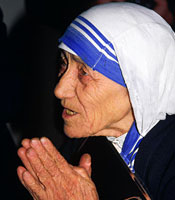 siblings. At the age of 12, she decided that she wanted to be a missionary and spread the love of Christ. At the age of 18 she left her parental home in Skopje and joined the Sisters of Loreto, an Irish community of nuns with missions in India.
siblings. At the age of 12, she decided that she wanted to be a missionary and spread the love of Christ. At the age of 18 she left her parental home in Skopje and joined the Sisters of Loreto, an Irish community of nuns with missions in India.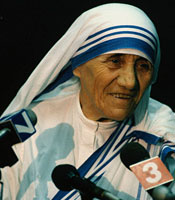 has presence in more than 100 countries.
has presence in more than 100 countries. from the childhood. There is a very famous incident in this regard. A British school inspector once came to Gandhiji's school and set a spelling test. Gandhiji spelled all the words correctly except kettle. The class teacher noticed the mistake and gestured Gandhiji to copy the correct spelling from the boy sitting next to him. Gandhiji refused to take the hint and was later scolded for his "stupidity".
from the childhood. There is a very famous incident in this regard. A British school inspector once came to Gandhiji's school and set a spelling test. Gandhiji spelled all the words correctly except kettle. The class teacher noticed the mistake and gestured Gandhiji to copy the correct spelling from the boy sitting next to him. Gandhiji refused to take the hint and was later scolded for his "stupidity". dedicate himself completely to the service of humanity. He realized that absolute continence or brahmacharya was indispensable for the purpose as one could not live both after the flesh and the spirit. In 1906, Gandhiji took a vow of absolute continence. In the course of his struggle in South Africa, Gandhiji, developed the concepts of Ahimsa (non-violence) and Satyagraha (holding fast to truth or firmness in a righteous cause). Gandhiji's struggle bore fruit and in 1914 in an agreement between Gandhiji and South African Government, the main Indian demands were conceded.
dedicate himself completely to the service of humanity. He realized that absolute continence or brahmacharya was indispensable for the purpose as one could not live both after the flesh and the spirit. In 1906, Gandhiji took a vow of absolute continence. In the course of his struggle in South Africa, Gandhiji, developed the concepts of Ahimsa (non-violence) and Satyagraha (holding fast to truth or firmness in a righteous cause). Gandhiji's struggle bore fruit and in 1914 in an agreement between Gandhiji and South African Government, the main Indian demands were conceded. Soon after his return from England Gandhiji was arrested without trial.
Soon after his return from England Gandhiji was arrested without trial.


